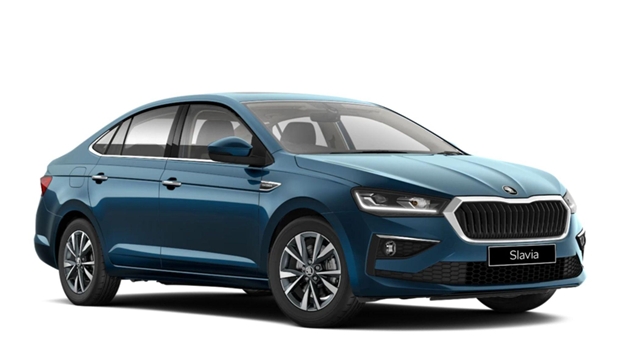
The Volkswagen Virtus and Skoda Slavia share the same MQB A0 IN platform, yet they offer two very different experiences that reflect their unique personalities. Both sedans come from the Volkswagen Group family and aim to attract buyers looking for a premium feel combined with modern technology and strong performance.
Even though they share many mechanical components, their designs, interiors, and driving dynamics set them apart in ways that make each car stand out on its own. This sibling rivalry between the Virtus and Slavia is fascinating because it shows how two cars can be built on the same foundation but appeal to different tastes and preferences.
Exterior Design: Elegance Meets Sportiness
Looking at the Skoda Slavia, you notice a clean and elegant design that feels timeless and sophisticated. Its horizontal lines and subtle styling give it a composed and classy presence on the road. The Slavia’s design does not scream for attention but instead offers a quiet confidence that fits well in both formal and casual environments.
In contrast, the Volkswagen Virtus takes a more assertive approach with sharper edges and a sportier front grille. Its bold styling and aggressive stance give it a youthful and dynamic vibe that stands out on the road. These differences in design clearly reflect the brands’ intentions: Skoda aims for elegance and refinement, while Volkswagen focuses on sportiness and energy.
Interior Ambience: Comfort Versus Energy
Inside the Skoda Slavia, the cabin feels warm and inviting with beige tones and chrome accents that create a premium atmosphere. The large 10-inch touchscreen and digital driver display add a modern touch without overwhelming the space. Ambient lighting enhances the overall feeling of comfort, making it a pleasant place for both drivers and passengers.
On the other hand, the Volkswagen Virtus features a sportier interior theme with red accents that inject a sense of excitement. Its infotainment system, branded as VW Play, is slightly larger and comes with a user-friendly interface that appeals to tech enthusiasts. The Virtus also offers ventilated seats and a digital driver display designed with a sporty flair, making the cabin feel more energetic and youthful. Both cars focus on comfort, but their interiors clearly reflect their distinct personalities.
Performance and Engine Options: Shared Powertrains, Different Drives
Underneath the hood, the Virtus and Slavia offer the same engine choices—a 1.0-litre turbocharged petrol and a more powerful 1.5-litre TSI petrol engine. Both models are mated to manual and automatic transmissions that deliver smooth and responsive performance. However, the driving experience varies between the two.
The Virtus is known for its lively and engaging drive. The 1.5-litre engine offers brisk acceleration and a sporty feel that makes highway cruising enjoyable. Its gearbox is generally smooth but can feel a bit jerky in stop-and-go traffic. The 1.0-litre engine suits city driving well but lacks the power of the bigger unit.
The Skoda Slavia, meanwhile, provides a more refined and composed drive. Its 1.5 TSI engine paired with a manual transmission offers a great balance between performance and fuel efficiency, with mileage figures reaching up to 20.3 kilometres per litre under ideal conditions. The Slavia’s ride is tuned for comfort and stability, making it a great companion for long drives and daily commutes.
Features and Safety: Packed with Modern Amenities
Both the Virtus and Slavia come loaded with features that cater to modern buyers’ expectations. Ventilated front seats, digital driver displays, keyless entry, and push-button start are some of the key features on both cars. The Virtus includes sporty touches like an electric sunroof and a slightly larger infotainment screen, while the Slavia emphasises elegance through ambient lighting and a well-integrated infotainment system.
Safety is a priority for both cars, as they each earned a five-star rating in the Global NCAP crash tests. Standard safety equipment includes six airbags, ABS with EBD, electronic stability control, hill hold assist, and multi-collision braking. The manufacturers back their vehicles with a four-year or 100,000-kilometre warranty, reflecting confidence in build quality and reliability. These features make both cars strong contenders in the premium sedan segment.
Pricing and Value: Premium vs Accessible
Price plays a role in distinguishing these two siblings. The Skoda Slavia is priced at Rs. ₹ 11.98 L to ₹ 21.06 L (on-road price in Delhi), making it a more affordable option for buyers seeking value without sacrificing features.
The Volkswagen Virtus, however, commands a slight premium with prices ranging from ₹ 12.51 L to ₹ 22.58 L (on-road price in Delhi). This higher price is justified by its sharper styling, sportier driving character, and slightly more upscale interior feel. Both cars offer good value for money considering their German engineering and feature sets, but the choice often comes down to whether buyers prefer the Slavia’s elegance or the Virtus’s sportiness.
Conclusion
The Volkswagen Virtus and Skoda Slavia share the same platform but express very different personalities that appeal to distinct buyer preferences. The Slavia attracts those who value elegance, comfort, and a refined driving experience, while the Virtus appeals to those seeking a sportier design and a more engaging drive.
Both cars offer excellent safety, modern features, and solid performance, making them strong options in the premium sedan category. Ultimately, the choice depends on whether you lean toward classic sophistication or dynamic sportiness, but either way, you get a well-crafted car that delivers quality and style.





